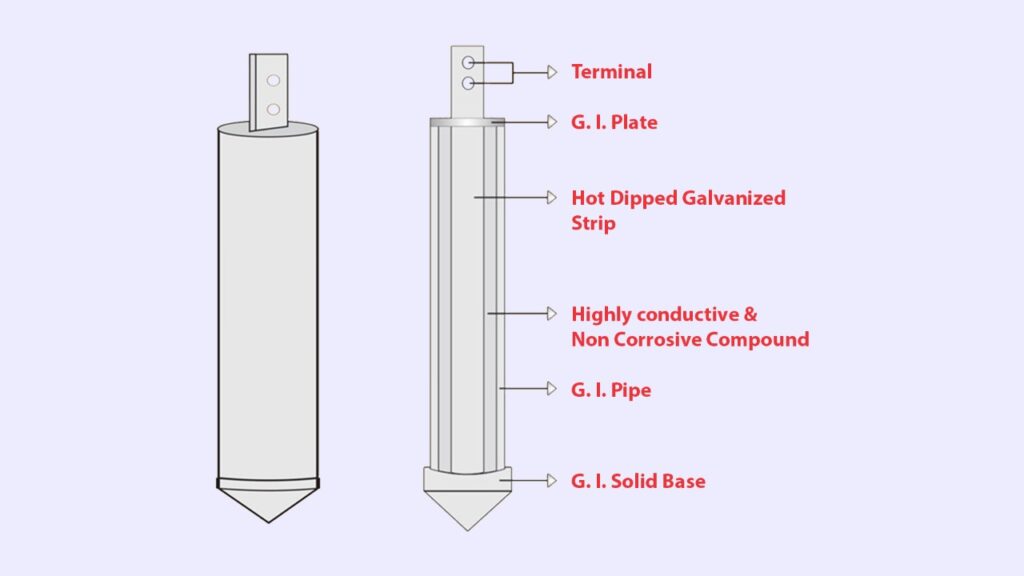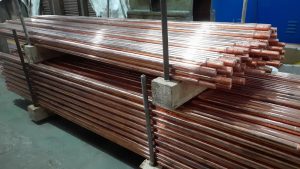Earthing, also known as grounding, is the practice of transferring electrical charges to the ground through low-resistance cables or rods to quickly discharge any stored energy. There are two main types of earthing: maintenance-free earthing and conventional system earthing. In this article, we will focus on maintenance-free earthing, which is preferred by manufacturers and installers.
Introduction to Maintenance Free Earthing
Maintenance-free earthing is a type of earthing system that does not require regular maintenance in order to function properly. This is typically achieved through the use of specialised materials that are resistant to corrosion and other forms of degradation, as well as through the use of advanced design techniques that maximise the efficiency of the earthing system. In general, maintenance-free earthing systems are more reliable and longer-lasting than traditional earthing systems, and are therefore often used in situations where continuous and reliable earthing is essential. Conventional earthing systems can degrade over time for a number of reasons. Conventional earthing systems use layers of salt and charcoal. Using salt and charcoal for earthing is generally not considered to be an effective or reliable method for providing earthing. This is because salt and charcoal are not particularly conductive materials, and are not able to effectively dissipate electrical currents in the way that other, more specialised earthing materials can. Additionally, salt and charcoal are prone to degradation over time, which can further reduce their effectiveness as earthing materials. Salt can leach out and corrode the earth electrodes used in the system. Additionally, the proportion of ingredients cannot be controlled accurately, making it unreliable. When salt and charcoal are used for earthing and are exposed to moisture, their effectiveness as earthing materials can be greatly reduced. This is because moisture can cause the salt and charcoal to become less conductive, which can make it difficult for them to effectively dissipate electrical currents. Additionally, moisture can cause the salt and charcoal to break down over time, leading to degradation and further reducing their effectiveness. This is where maintenance-free earthing becomes more reliable. This type of earthing also has a longer lifespan, typically lasting 15 to 20 years on average. Proper earthing protects both equipment and people from step and touch voltage.Benefits of Maintenance Free Earthing:
There are several benefits to using maintenance-free earthing, including: Reliability: Maintenance-free earthing systems are designed to be more reliable and longer-lasting than traditional earthing systems. This means that they are less likely to fail or become ineffective over time, which can be a safety concern in certain situations. Cost savings: Maintenance-free earthing systems do not require regular maintenance in order to function properly, which can save time and money compared to conventional earthing systems. Durability: Maintenance-free earthing systems are typically made with specialized materials that are resistant to corrosion and other forms of degradation. This means that they are more durable and can withstand harsh environments, making them well-suited for use in a variety of applications. The effectiveness of earth electrodes can be affected by moisture for a number of reasons. One reason is that moisture can cause the earth electrodes to corrode or degrade over time, which can reduce their conductivity and make it difficult for them to dissipate electrical currents effectively. Additionally, moisture can cause the soil around the earth electrodes to become less conductive, which can further reduce their effectiveness. Finally, moisture can also cause the earth electrodes to become coated with contaminants, such as salt or other minerals, which can also reduce their effectiveness. Maintenance free earthing is a new, standardised, and scientifically produced earthing system that does not require regular watering, except in sandy soil. It keeps the resistance of the earth constant and stable throughout the year. The conductive compound creates a conductive zone, providing a larger surface area for peak current dissipation. It also provides a reliable reference point.Some additional benefits include:
- Protecting installations and machinery by providing a low-impedance path for fault currents
- Providing the system with an equipotential reference voltage
- Having a lifespan greater than 20 years
- Being non-corrosive
- Remaining intact with the Earth Rod
Backfill used in Maintenance-Free Earthing:
Chemical earthing uses a maintenance-free component called backfill. Backfill is a material that is used to fill the area around an earth electrode in an earthing system. The purpose of backfill is to provide support for the earth electrode and to ensure that it is able to function properly. Backfill materials are typically chosen for their conductivity and ability to support the earth electrode, and may include materials such as sand, gravel, or other specialized earthing materials. In general, backfill is an important part of an earthing system, as it helps to ensure the reliability and effectiveness of the earth electrode. It is possible for backfill used in earthing systems to contain aluminum silicate. This material is highly porous, which means that it is able to absorb and retain moisture. This can help to prevent the earthing system from becoming too dry, which can reduce its effectiveness. Additionally, aluminum silicate is able to release moisture slowly over time, which can help to maintain a stable moisture level in the earthing system. This can help to ensure that the earthing system is able to function properly and dissipate electrical currents effectively.Copper Rod in Maintenance Free Earthing:
 Copper-bonded rods are generally considered to be better than pipe earthing for several reasons. One reason is that copper bonded rods are more conductive than pipes, which means that they are able to dissipate electrical currents more effectively. This can help to ensure that the earthing system is able to function properly and provide the necessary level of protection. Additionally, copper-bonded rods are more durable and resistant to corrosion than pipes, which means that they are less likely to degrade over time and become less effective. This can help to ensure the long-term reliability of the earthing system. Overall, copper bonded rods are often considered to be a superior choice for earthing systems compared to pipes.
Conventional earthing systems do not use copper rods or aluminium silicate, so the system can be damaged by fluctuating humidity levels caused by changes in the weather.
Copper-bonded rods are generally considered to be better than pipe earthing for several reasons. One reason is that copper bonded rods are more conductive than pipes, which means that they are able to dissipate electrical currents more effectively. This can help to ensure that the earthing system is able to function properly and provide the necessary level of protection. Additionally, copper-bonded rods are more durable and resistant to corrosion than pipes, which means that they are less likely to degrade over time and become less effective. This can help to ensure the long-term reliability of the earthing system. Overall, copper bonded rods are often considered to be a superior choice for earthing systems compared to pipes.
Conventional earthing systems do not use copper rods or aluminium silicate, so the system can be damaged by fluctuating humidity levels caused by changes in the weather.
Maintenance Free or Conventional Earthing?
Conventional Earthing has certain drawbacks:- There is no standardisation, either for the electrodes or the backfill.
- Most often, commercial-grade cast iron plate or GI pipe is utilised as an electrode.
- Corrosion results from a reaction between the electrode and the backfill (SALT).
- Places with a high water table, rushing water, etc. are not suited.
 Thank you for reading the blog, Axis is a leading manufacturer and supplier of Electrical Components to over 80+ Countries. Talk to our industry expert by visiting our contact us section. You can also watch our videos by our experts – click here.
Follow us on LinkedIn for regular updates on our Products!
Thank you for reading the blog, Axis is a leading manufacturer and supplier of Electrical Components to over 80+ Countries. Talk to our industry expert by visiting our contact us section. You can also watch our videos by our experts – click here.
Follow us on LinkedIn for regular updates on our Products!







